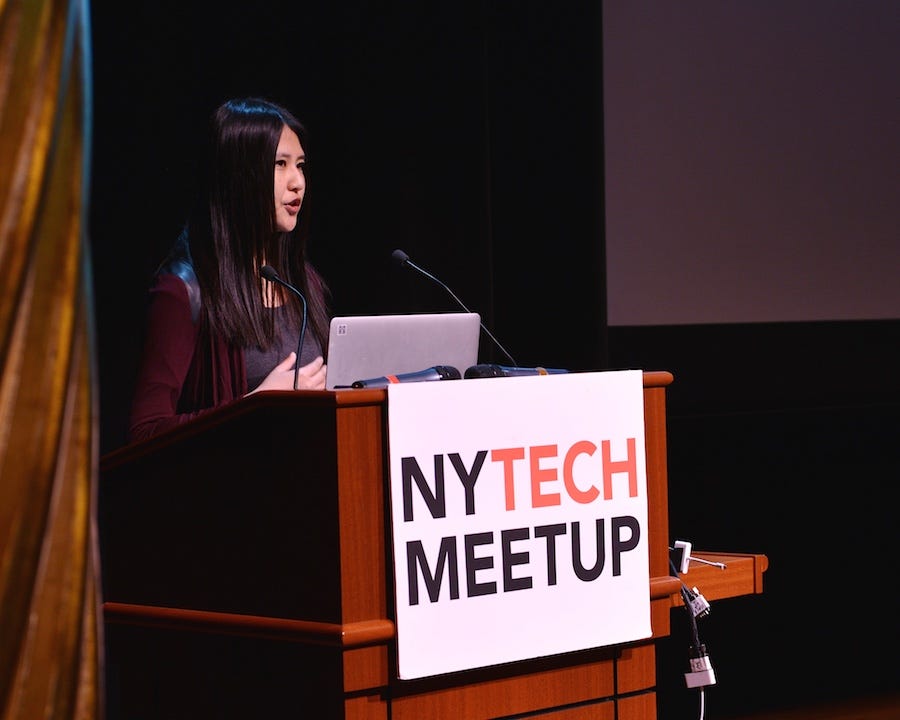
You can also read it on Medium.com:
The Three Phases to Improve Your Typography: An Interview with Wenting Zhang of TypeDetail

Cultivating an eye for typography can be challenging to designers first learning. TypeThursday sat down with Wenting, creator of TypeDetail, to talk about the steps in improving your typographic skills.
TypeThursday: Wenting, I really appreciate you coming in for this interview.
Wenting Zhang: No problem. My pleasure.
TT: Well, great. So, looking up your history and what you’re about, I can tell you have a really deep love and appreciation for typography, especially on the web. Can you share with us what got you interested in it?

WZ: Interestingly I was not into typography at all at the beginning of my career. I went to undergrad for industrial design in China (in Zhejiang University), where typography was not part of the curriculum, mainly because of the culture difference, eastern language vs. western language. So I never got the proper introduction to typography early on, even though I was a design major from the beginning.
When I came to the US to go to Design and Technology for MFA at Parsons the New School For Design, typography was again not required in curriculum because it was grad school level. When I showed my work, people constantly pointed out that the typography was not so great. I tried to look up some resources but it is not until I took a class in Motion Graphics that I really get into the type world. The teacher, Ken Tanabe, is one of the best teacher I had while at Parsons. He pointed out a lot of bad choices I made in my piece and he really emphasized on typography in his motion graphics lectures. One of his classes was solely about typography and where to find good typefaces. Starting from there, I got a sense of what good typography looks like and where to find then, and started my journey in this exciting new world.
When I showed my work, constantly people pointed out that the typography was not so great.
After graduation, I took a job at Comedy Central, part of Viacom Inc. Comedy Central has an amazing brand, working on CC stuff is always exciting for me. All my awesome coworkers are also type nerds. They further introduced me to how to use good typography on a professional level. One day, I was looking at Designer News, and found an article written by Medium designer Marcin Wichary: Crafting link underlines on Medium. Reading about the attention paid to details in the article really open my eyes and broaden my horizon. I was inspired by it, continued to work on my own project underline.js and the process of finishing this project helped me really get into typography’s deep water. Later on, I continued to read more and more about type design and typography, online articles and books. The book by Stephen Coles: Anatomy of Type and 100 day project inspired to me do typedetail.com.
TT: That became the impetus of Type Detail. A chance for you to really understand what typography is.
As I worked on Type Detail, I have found typography skills develop in three phases.
WZ: Yes, the reason of doing Type Detail was an exercise in self-study. As I worked on Type Detail, I have found typography skills develop in three phases.
Phase One is what I called the “Over-Dramatic Phase.” In the very beginning we tend to pick those typefaces with exotic features. Those display fonts that really stand out and shout. It is a phase almost every amateur designer, like myself, who didn’t get proper training went through. Looking back, I just want to burn everything I did during this phase and die! It is overdramatic because my eye was not trained to see the detailed difference, but only see the big difference. The more dramatic a typeface is, the more I like them. I think they are unique, and ignore the subtle uniqueness in details. In Over-Dramatic Phase, I have to admit I used to be a visitor of dafont.com. Ken Tanabe once asked me where the typeface in my motion graphics piece comes from, I said dafonts.com, and I honestly thought it is a good answer. Then I was told never ever go there!
The reason why at the time I thought dafont.com is a good answer is another point. Ken Tanabe taught us to be very respectful to art work’s licensing. Stealing a premium font and use it in our piece is another felony crime in our motion graphics class.
Phase Two is about being safe, professional, knowing the rules and following them.